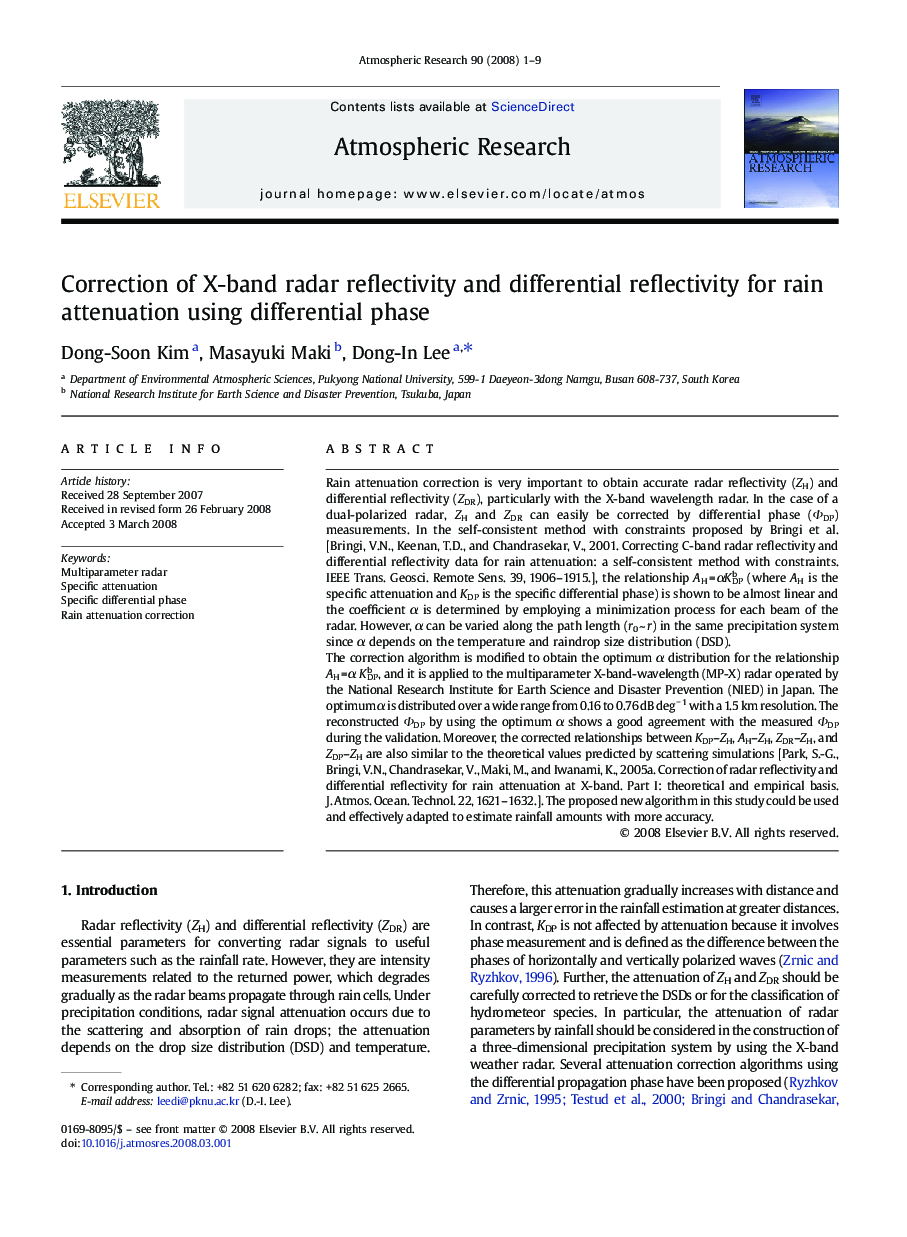| Article ID | Journal | Published Year | Pages | File Type |
|---|---|---|---|---|
| 4451146 | Atmospheric Research | 2008 | 9 Pages |
Rain attenuation correction is very important to obtain accurate radar reflectivity (ZH) and differential reflectivity (ZDR), particularly with the X-band wavelength radar. In the case of a dual-polarized radar, ZH and ZDR can easily be corrected by differential phase (ΦDP) measurements. In the self-consistent method with constraints proposed by Bringi et al. [Bringi, V.N., Keenan, T.D., and Chandrasekar, V., 2001. Correcting C-band radar reflectivity and differential reflectivity data for rain attenuation: a self-consistent method with constraints. IEEE Trans. Geosci. Remote Sens. 39, 1906–1915.], the relationship AH = αKDPb (where AH is the specific attenuation and KDP is the specific differential phase) is shown to be almost linear and the coefficient α is determined by employing a minimization process for each beam of the radar. However, α can be varied along the path length (r0 ~ r) in the same precipitation system since α depends on the temperature and raindrop size distribution (DSD).The correction algorithm is modified to obtain the optimum α distribution for the relationship AH = α KDPb, and it is applied to the multiparameter X-band-wavelength (MP-X) radar operated by the National Research Institute for Earth Science and Disaster Prevention (NIED) in Japan. The optimum α is distributed over a wide range from 0.16 to 0.76 dB deg− 1 with a 1.5 km resolution. The reconstructed ΦDP by using the optimum α shows a good agreement with the measured ΦDP during the validation. Moreover, the corrected relationships between KDP–ZH, AH–ZH, ZDR–ZH, and ZDP–ZH are also similar to the theoretical values predicted by scattering simulations [Park, S.-G., Bringi, V.N., Chandrasekar, V., Maki, M., and Iwanami, K., 2005a. Correction of radar reflectivity and differential reflectivity for rain attenuation at X-band. Part I: theoretical and empirical basis. J. Atmos. Ocean. Technol. 22, 1621–1632.]. The proposed new algorithm in this study could be used and effectively adapted to estimate rainfall amounts with more accuracy.
